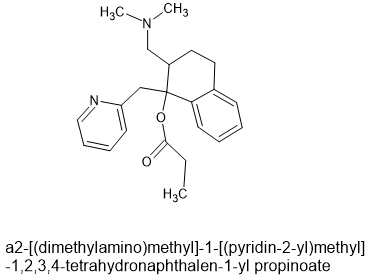Here's the synthesis: https://ibb.co/w7fm10w
The Strecker-like condensation between N-benzyl-4-piperidone [3612-20-2] (1), KCN and PhNH3+Cl- gives 4-anilino-1-benzylpiperidine-4-carbonitrile [968-86-5] (2). Acid catalyzed partial hydrolysis of the nitrile to the amide afforded 4-anilino-1-benzylpiperidine-4-carboxamide [1096-03-3] (3). Reaction with formamide serves to form the spiroimidazolidone ring giving 8-benzyl-1-phenyl-1,3,8-triaza-spiro[4.5]decan-4-one [974-41-4] (4). Catalytic hydrogenation then removes the benzyl group (5).
[1] Goebel, Tim; Ulmer, Daniela; Projahn, Holger; Kloeckner, Jessica; Heller, Eberhard; Glaser, Melanie; Ponte-Sucre, Alicia; Specht, Sabine; Sarite, Salem Ramadan; Hoerauf, Achim; Kaiser, Annette; Hauber, Ilona; Hauber, Joachim; Holzgrabe, Ulrike (2008). "In Search of Novel Agents for Therapy of Tropical Diseases and Human Immunodeficiency Virus". Journal of Medicinal Chemistry. 51 (2): 238–250. doi:10.1021/jm070763y.
[2] Janssen Paul Adriaan Jan, US3155669, US3155670, US3161644 & US3238216 (1964, 1964, 1964 & 1966 all to Research Laboratorium C Janssen NV).
[3] W Scharpf, US3839342 (1974 to FMC Corp).
Why not test the benzyl group is already strong enough without needing to deprotect and replace with another sidechain?
Without yields and details on the workup, it's not clear how much work is involved. But I did read the Janssen patent and it doesn't look like a simple matter. As I mentioned, the intermediate is used in the synthesis of a neuroleptic so in theory at least, it's an item of commerce.
While I appreciate a lot of vendors offer the material, it's quite likely that they are just buying the intermediates. It's not as costly as one might think, but obtaining it at scale might well be an issue. By CHEAP I mean $120-$200 per GRAM. So suddenly that SN2 N-alkylation needs to be optimized. Cs2CO3 appears to be the base that produces the highest yields in related reactions but I'm uncertain of it's solubility and indeed the scalability of such a route.
So while I'm sure it's quite simple to produce a few grams, I suggest one might need to look VERY closely at the syntheses of fluspirelene. US 3238216 covers it and a lot of other patents cite it so there is almost certainly at least SOME optimizations disclosed.
Last edited:








